During Mixing Audio, What Level Should the Master Fader Be Reading in Studio One
Since its release in 2009, Studio One has developed quite a post-obit and has fast go a leading DAW for hobbyists, project-studio owners, and serious sound professionals akin. With each iteration, Studio One has provided users with more than and more than tools to compete with the biggest platforms out there. Now, at version four.five, Studio One is perfectly suited to handling even the well-nigh challenging recording and mixing tasks. In this article, we'll expect at the tools and some tricks that make it easier than ever to mix the side by side international hit song.
To begin with, yous could open a new session from the main screen. As you can see on the left, there'south null here but an empty session. Yous'll take to add together tracks (sound, grouping busses, FX tracks) as yous need them. What's nice about Studio 1 is that yous can literally drag and drib your audio files into the session window and audio tracks volition be created for each one. This same principle applies to MIDI parts and FX tracks; just drag-and-drib them into an empty area in the session console and information technology will create the tracks for you.
Alternatively, you could starting time from a template, information technology'south often preferable to piece of work this manner, because it's so much faster to get mixing if you lot don't have to worry about building all your tracks. This, too, is pretty easy. Merely create all the tracks you lot think could exist in a session (boot, snare, hi-hats, bass, guitar i, guitar 2, etc), then add your effects tracks (Room Reverb, Filibuster, Hall Reverb, etc). The template can also comprise the plug-ins. So, if yous accept a favourite reverb, filibuster, compressor or EQ, you tin can store this as part of the template and have it at the ready each time you create a new song file. One time the template is created, it's only a matter of dragging audio files to the advisable tracks.
There are some mixers who prefer to only include buses (drums, bass, keys, etc), effects channels and their favourite plug-ins in the mix window and relieve the template with no audio tracks. This way, they tin drag all audio files for a song direct into the session window and Studio One volition very smartly create the tracks. Then, simply arrange the tracks, rename them (if desired) and colour them to make the nigh sense of any similar instrumentation.
For example, you might put all drums together and make them blueish; then, bass and make it yellow. Adjacent, elevate all your guitars together and make them light-green… and so on. If you use this color scheme in a template, and so you always have the same visual reference for where instruments are in your project.
Building blocks
In this tutorial, we'll walk through setting up a template, adding audio tracks and working through the basics of the mixing process. Ane thing to annotation: in that location'due south more than i way to mix a vocal. Some mixers like the traditional arroyo where they start with all faders down and work through each track – bring up each fader and edifice the mix this manner.
Others like to use the 'top downward' approach where they begin with furnishings on the main buss then build the mix with these turned on. This approach gives the song a more polished audio equally information technology is built and allows the mixer to hear more than of what needs to be washed to achieve the 'finished sound' – this often enables them to utilise fewer plug-ins on the individual channels and get a more natural sound.
The point is… there's no right or wrong way to mix and, at the end of the day – the mix is purely subjective. And so, apply the tools available and discover the approach that works best for you. And the most important gene in mixing is to apply your ears. Information technology's easy to begin setting EQs and compressors based on what y'all've read, or past what experiences you've had, merely listening is the merely mode to really understand what's going on in your mix and where problems are that need to be addressed. Try turning off your screen occasionally and simply listening.
Go compare
It's a practiced thought to compare your track to a released vocal that's at to the lowest degree similar to the one you're mixing and use it as a bespeak of reference. Drop it into your session with no furnishings on whatsoever and apply information technology for comparison. Heed for the way the bass sits and how the guitars are panned. Listen for any effects treatments on the vocals and how they relate to the residual of the mix. So, mute the reference track and keep working. This will become miles toward helping you mix.
I final discussion – mix at depression levels. The thought is: if you tin't behave on a conversation while the music is playing, it's also loud. Your ears become less capable of making authentic mix decisions. So, keep that book downward.
Mixing in Studio I: step-past-step
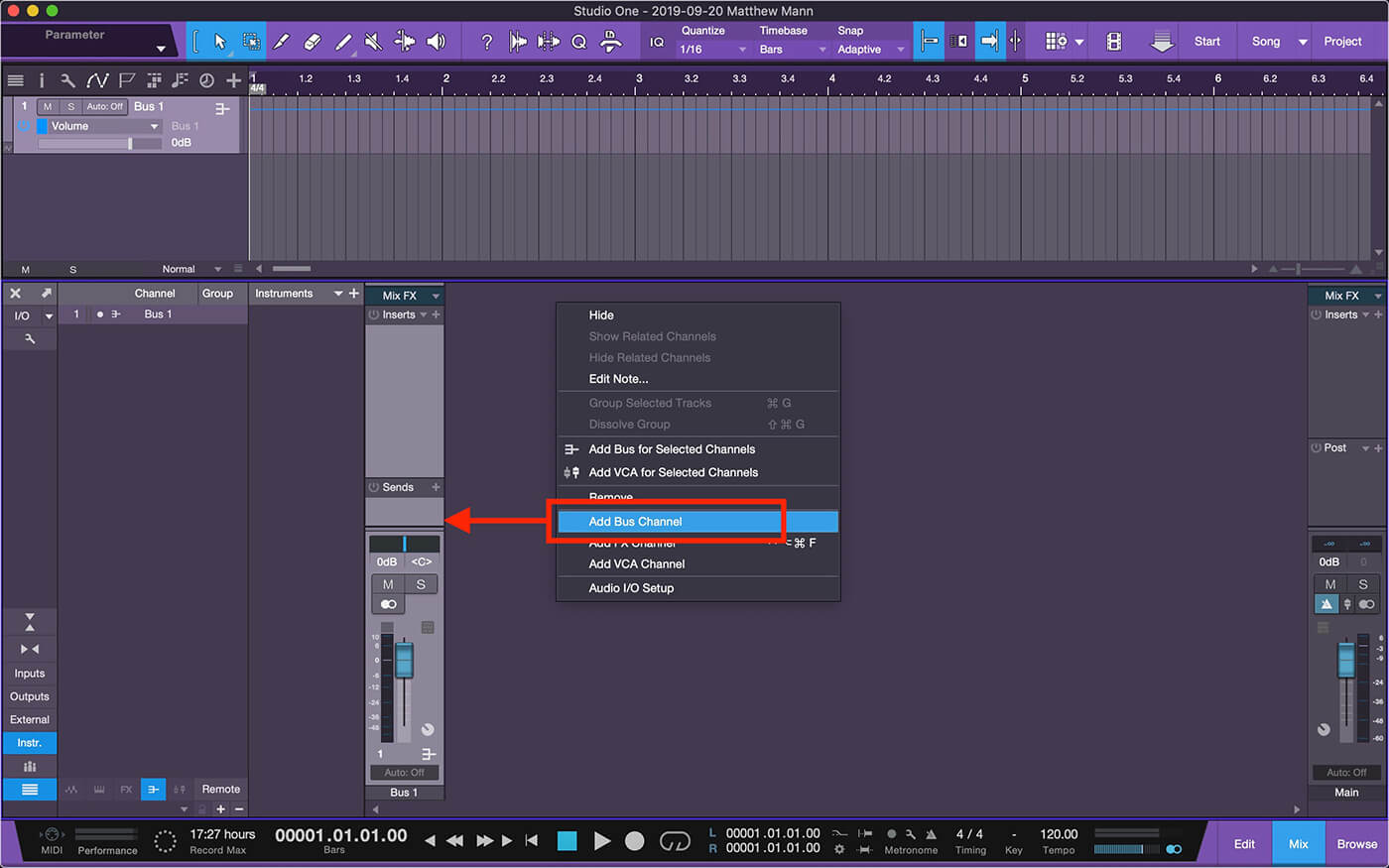
1. Let'southward begin with an empty song. Click F3 to open the Mix view. Right-click in the empty space and choose Add Jitney Channel. Nosotros'll repeat this cease until we have enough buss channels. Once we accept plenty buses, nosotros'll highlight them all and click on the name box for one of the bus tracks. Now choose a colour for your buses.

2. Next, nosotros'll create our FX buses. Offset by clicking the F7 key to bring upwardly the Effect Plugins list. From here, we tin can drag-and-driblet our favourite effects plug-ins onto an empty space in the session area and Studio One will create an FX bus. Click F7 again to hide the plug-ins listing. Colour and proper noun the effects buses as desired.
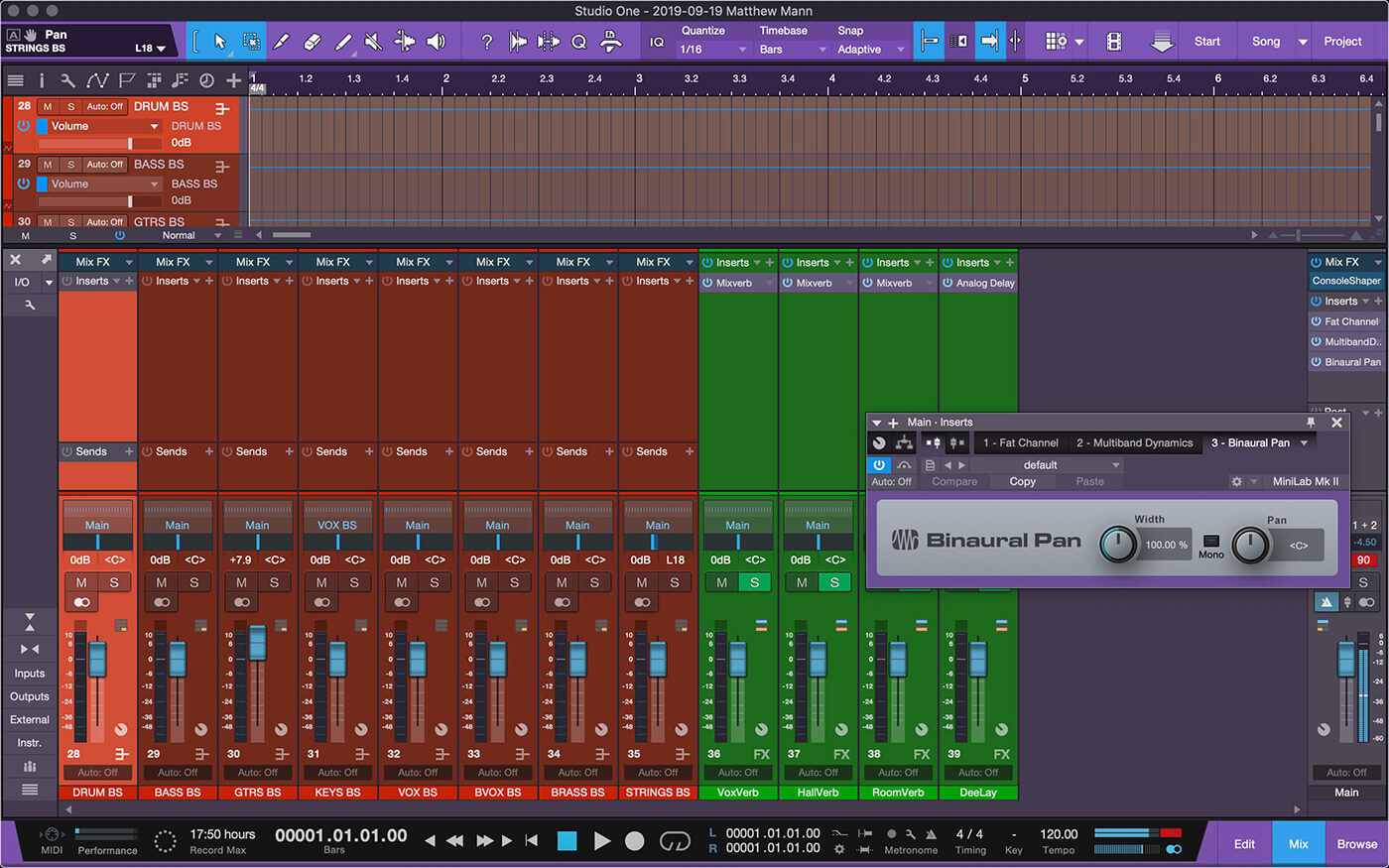
three. Now let's assign plug-ins to our Master Osculation. Click on the + to show your listing of effects plug-ins once again. Studio One allows us to relieve favourites at the top of the plug-ins list; otherwise, nosotros'll just roll until nosotros observe what we need and click it. The effect will then announced in the Master Buss.
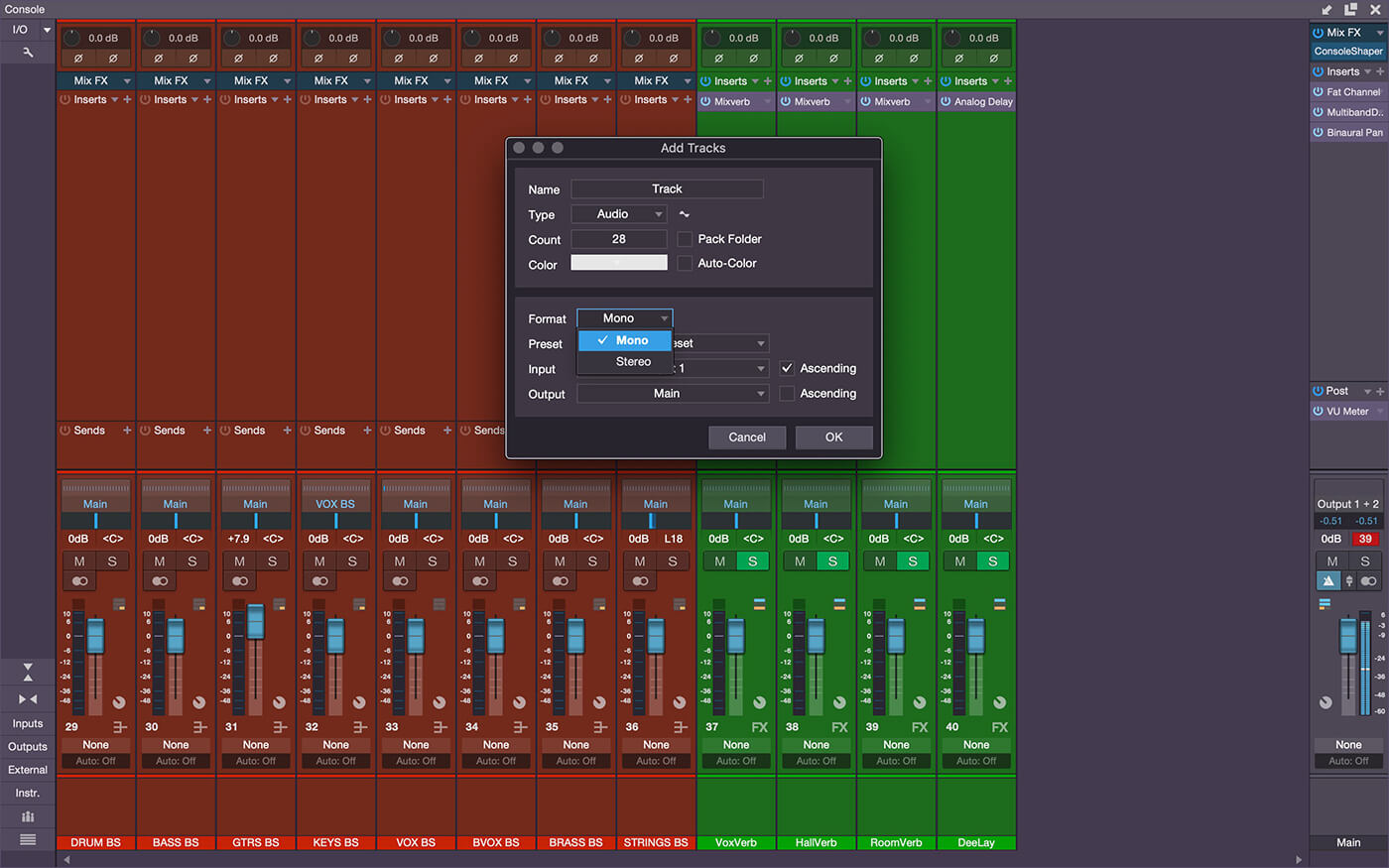
4. Once we're happy with the basic template, nosotros could go alee and save it as a template; however, for this article I'grand going to go ahead and ready empty tracks to include with your template. Printing T on your keyboard to open up the 'New Runway' dialogue. Here, I've selected 28 mono audio tracks to be labelled 'Track' in ascending order.
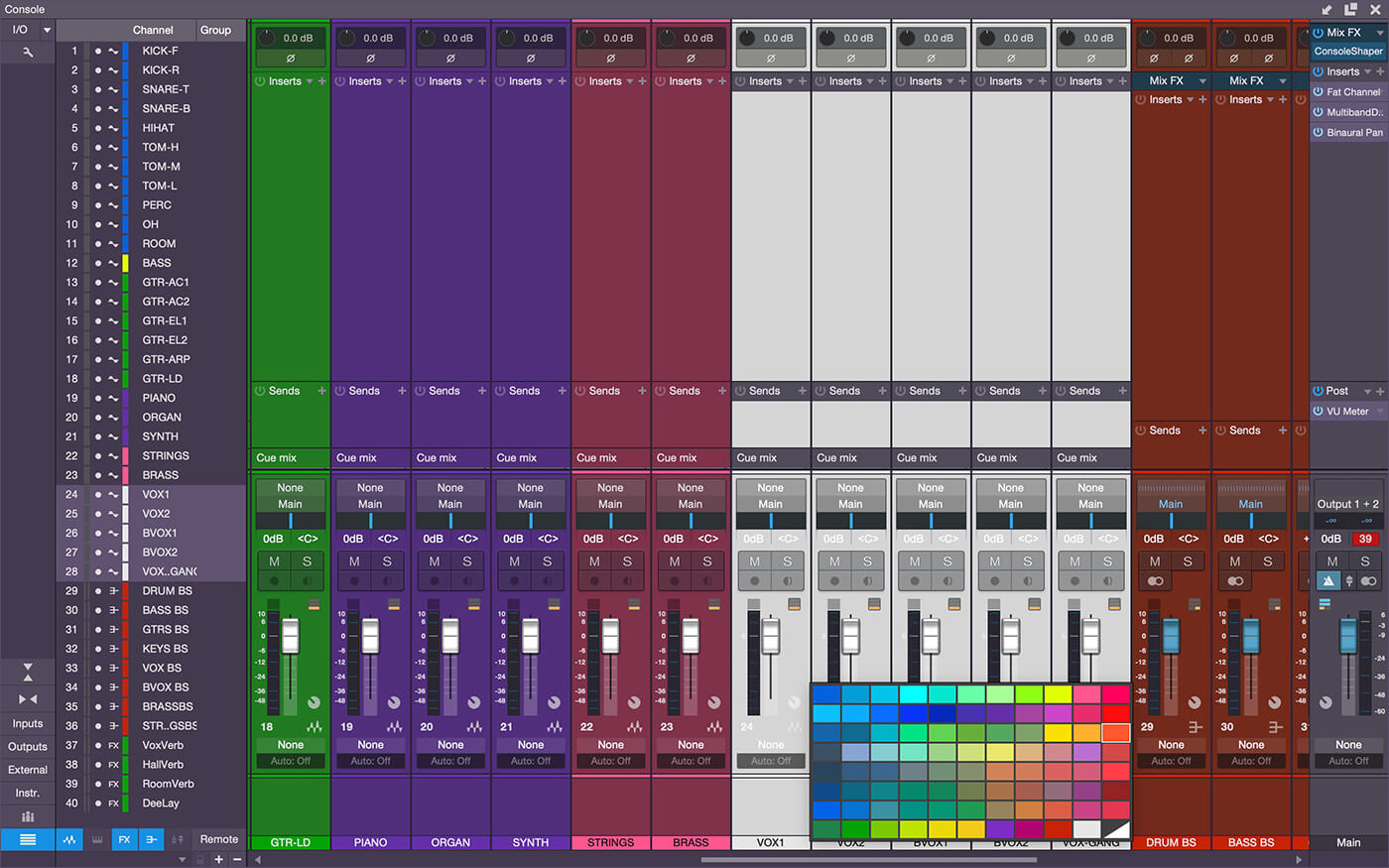
5. Now that all our tracks accept been created, we'll rename and colour them as we did with our buses. We'll too add some effects plug-ins to our tracks as needed.
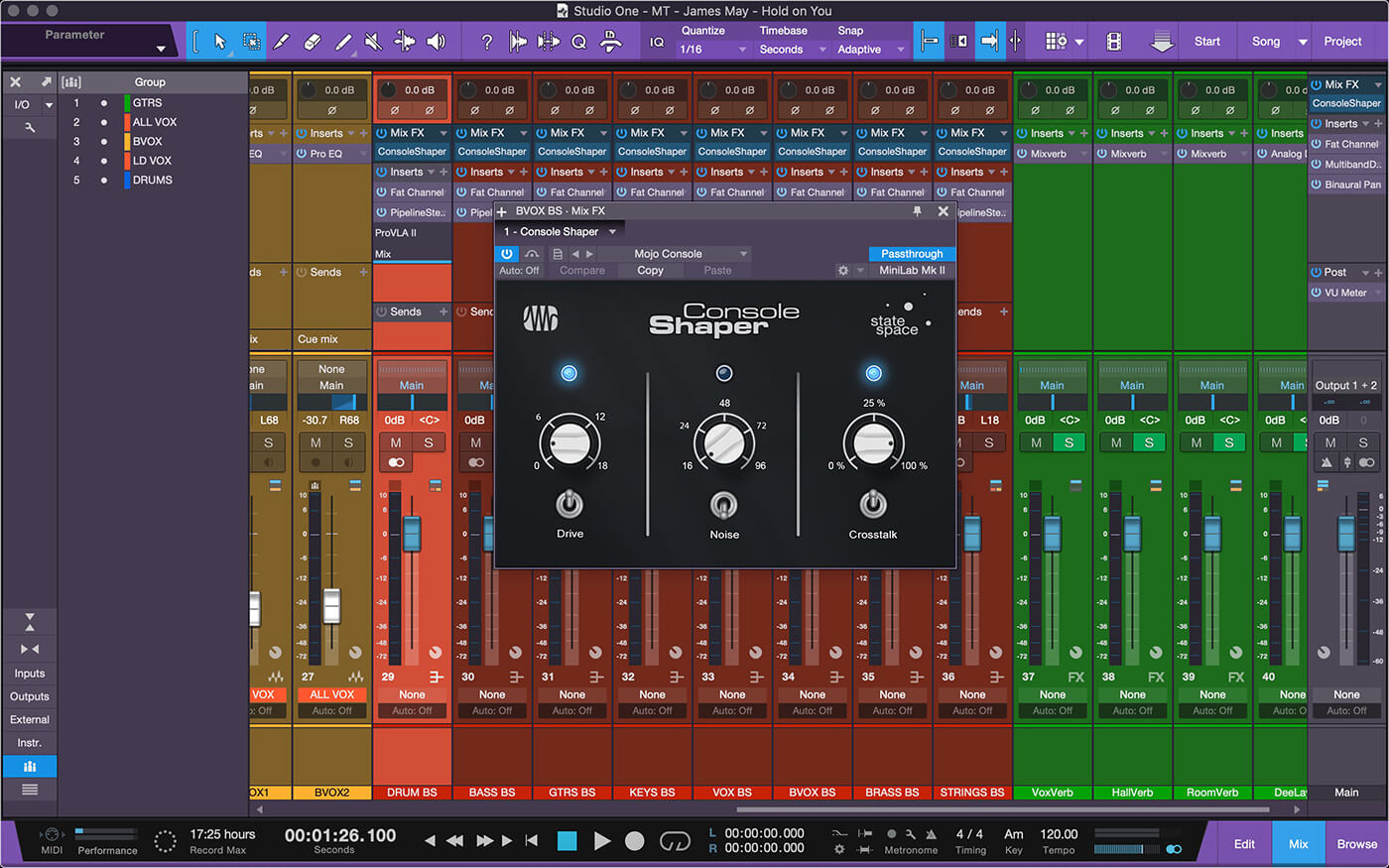
six. Before saving the template, I highly recommend adding the Panel Shaper to each osculation. It emulates the audio of a console and really helps gum your tracks together. Click the pointer adjacent to Mix FX at the top of the osculation tracks to add together it. We can add bulldoze, noise and crosstalk to gustatory modality.
![]()
GROUPS To make changes to multiple tracks at once (ie, all drums, etc), create groups. Select the tracks either by property downward Shift or Command/Ctrl and clicking on each rails. Once tracks are selected, Command/Ctrl-K will groups them. If a track in a Group needs a change, holding downwardly Option/Alt volition allow the modify on simply the one rail. Shift-Command-G dissolves the grouping.
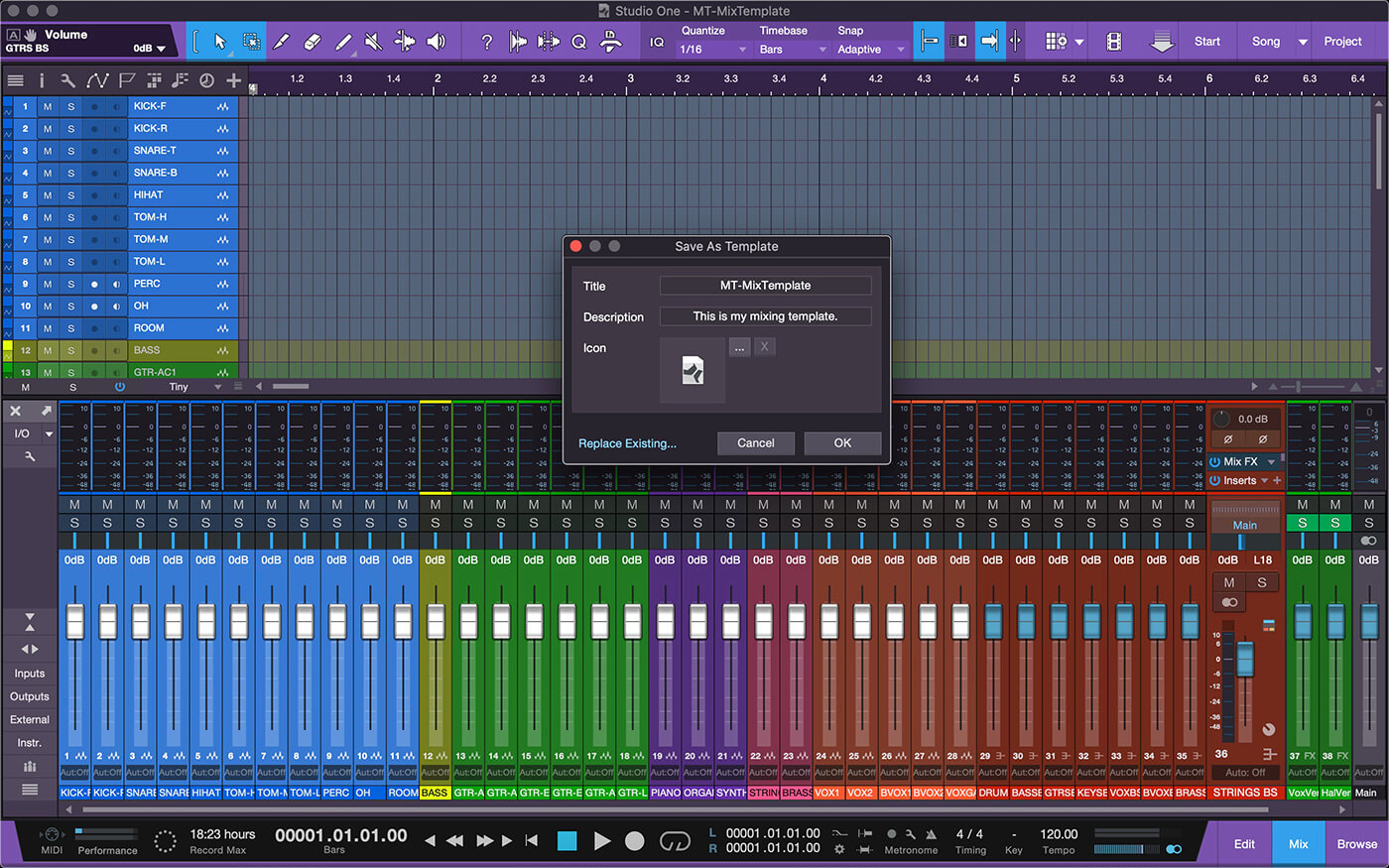
seven. Now that all our buses and tracks have been created, named, coloured and we've added our plug-ins, we can save our template. Click File > Salve As Template… and name your template. Y'all can as well add a details if you'd like. Click OK and then shut the session.
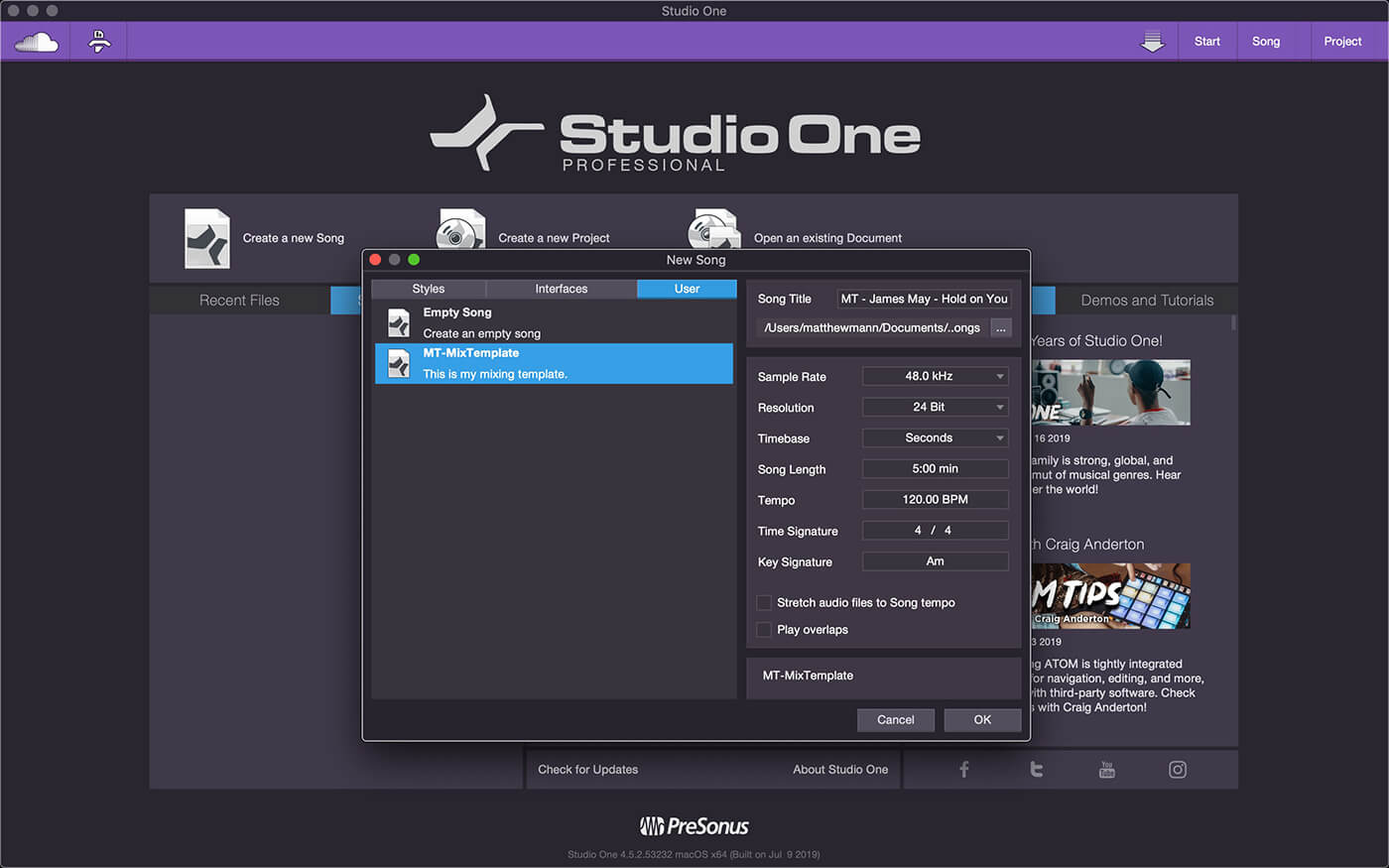
eight. Go to the Start Page and click Create a New Vocal. From the pop-up menu, click the User tab and then click our new template. Hither, we tin name our session, set up the sample rate, resolution, and more. Make sure to select a location for your song file; and then, nosotros'll click OK to create our song.
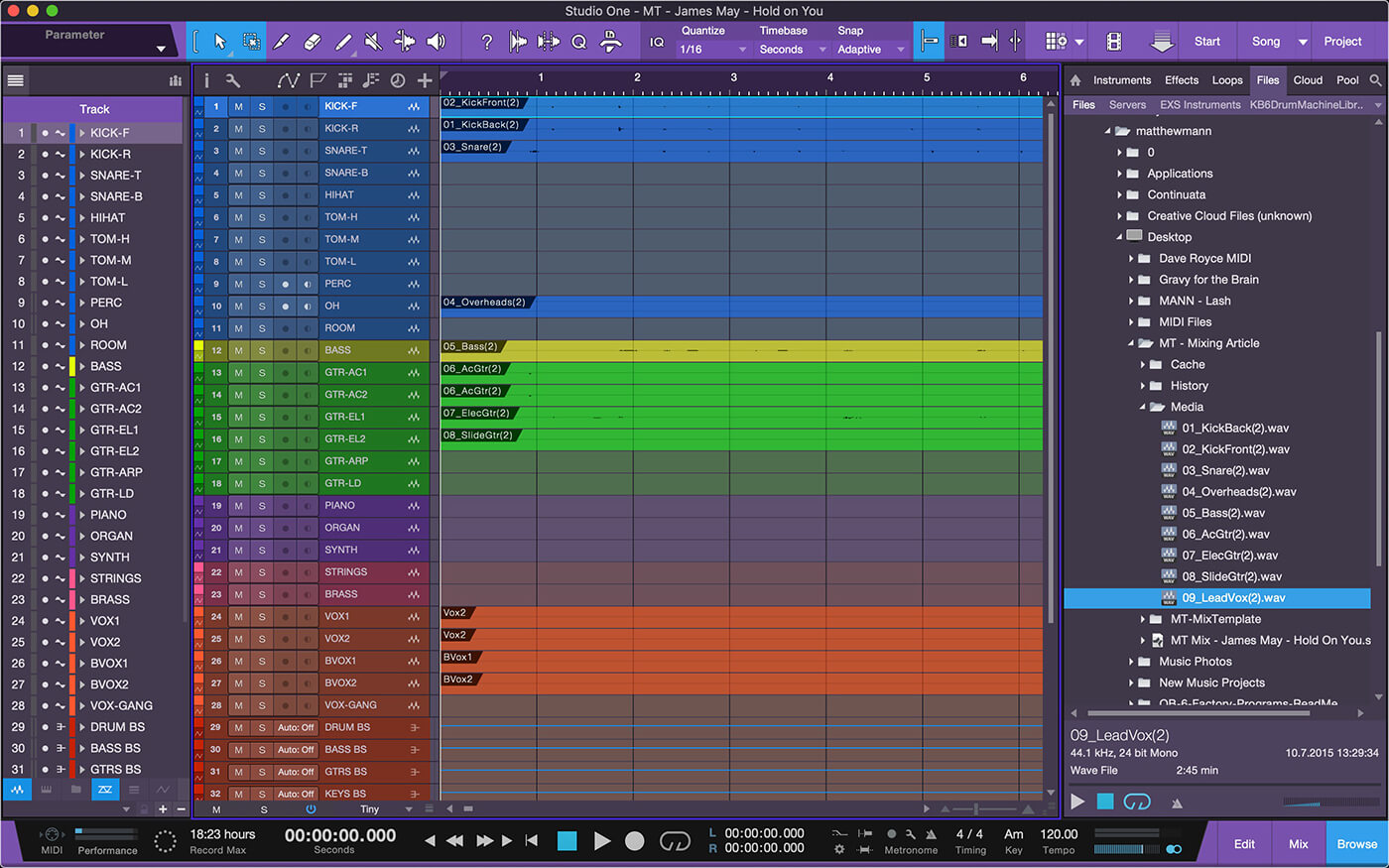
ix. Now it's time to drag our audio files into our new session. Click F9 to open the Files viewer. Find our audio tracks and brainstorm dragging them to the tracks in our song. Make certain to elevate them to zero on the timeline. Once, they're all in the song, click F9 again to hibernate the file viewer.
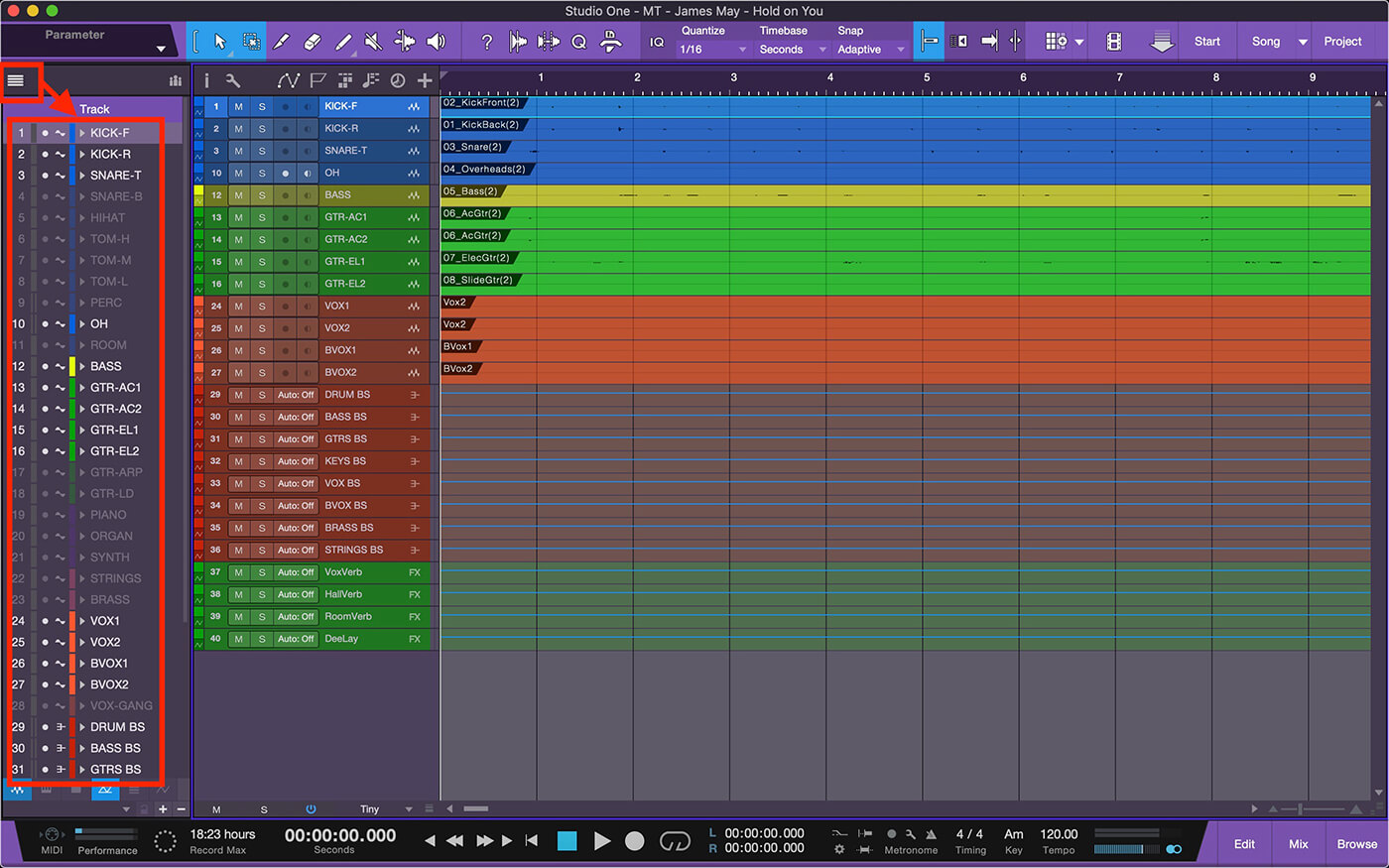
10. Remember all those actress tracks we created in our template? Use the Tracks List to show all tracks in our current song. By clicking on the little dot to the left of a track name, nosotros tin can hide that track from the session view and the mix view. We as well have the pick of deleting each track.
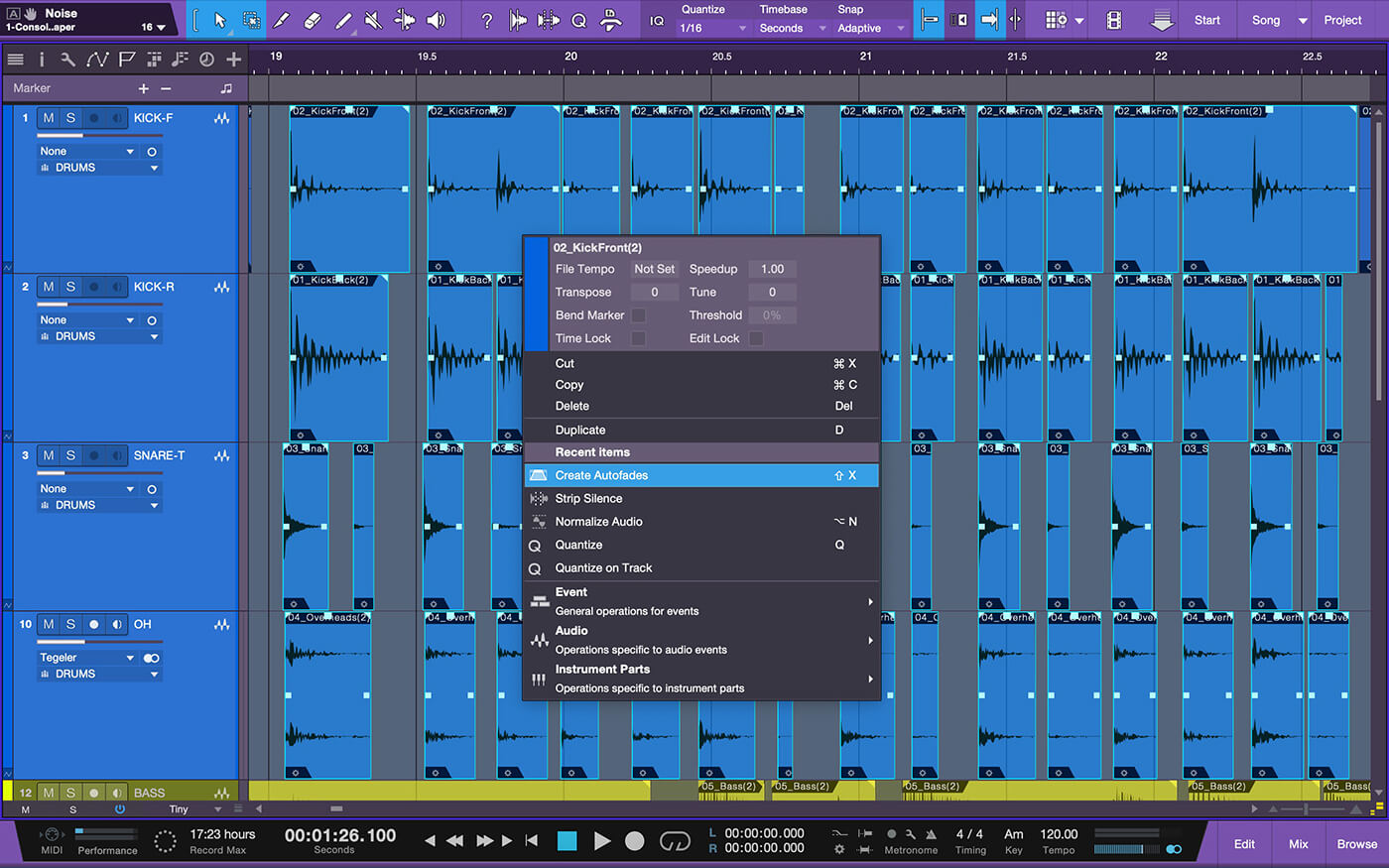
11. Best do is to clean up all spaces betwixt audio events. One quick way to do this is with the Strip Silence panel. It can accept some tweaking in the panel to get the threshold just right, merely it can save tonnes of time. Once all the silence has been cut out, highlight it all then press [Shift]-X to place fades at the beginning and cease of each audio event.
![]()
PIPELINE XT Some mixers similar using outboard gear to procedure tracks. Pipeline XT inserted on a track will send the signal to outboard gear with delay compensation. Additionally, Pipeline XT accepts images and notes for each case – this will go on a visual and/or written tape of the outboard processor's setting, then they tin can exist recalled quickly.
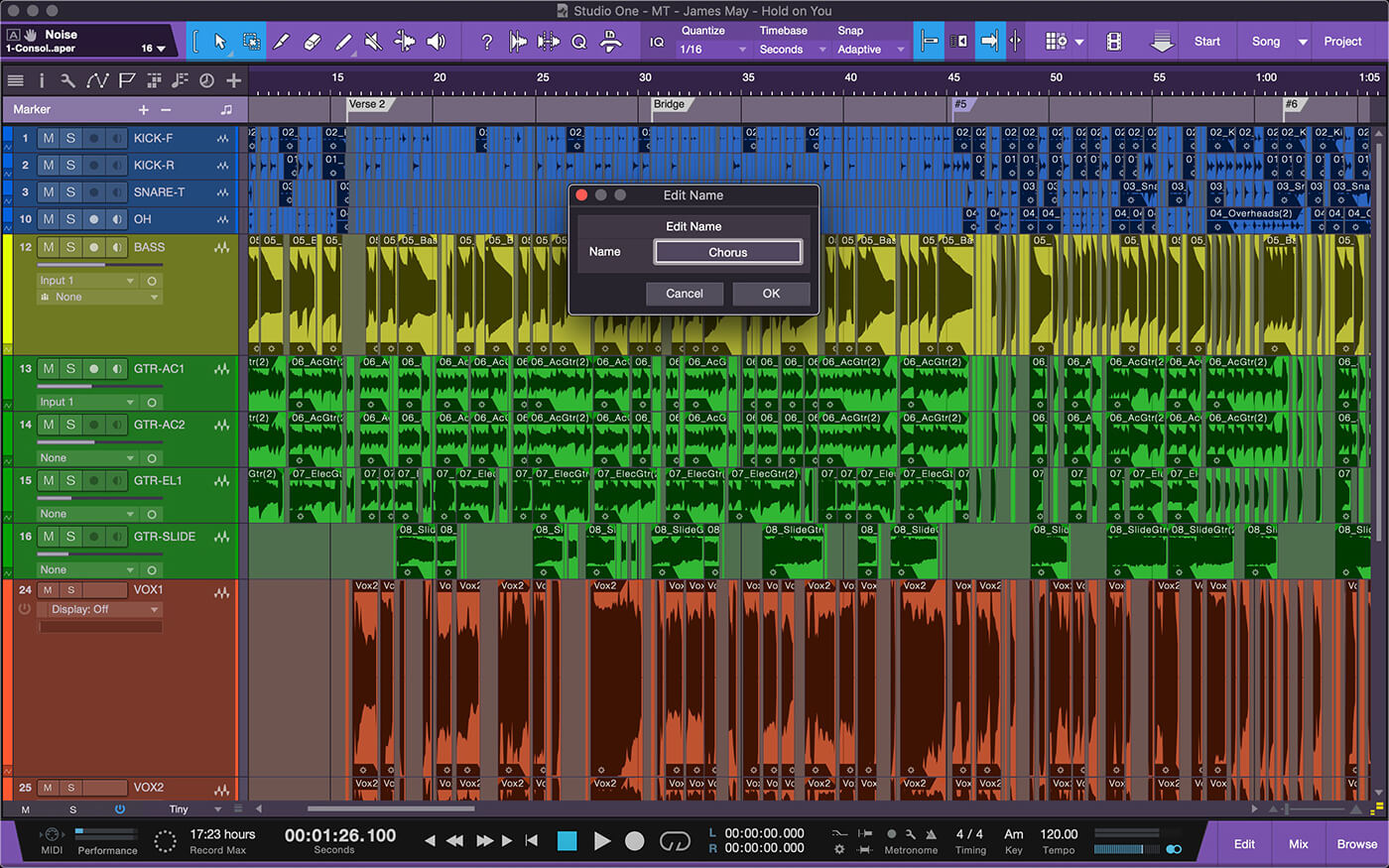
12. Listen through the song. Every bit the song is playing, hit the Y cardinal at the start of each section (poetry, chorus, span, etc). This volition place a marker in the Marking Runway. Double-clicking on these markers allows u.s. to rename them. It's now much easier to jump from one section to another. We can also loop a section betwixt ii markers.
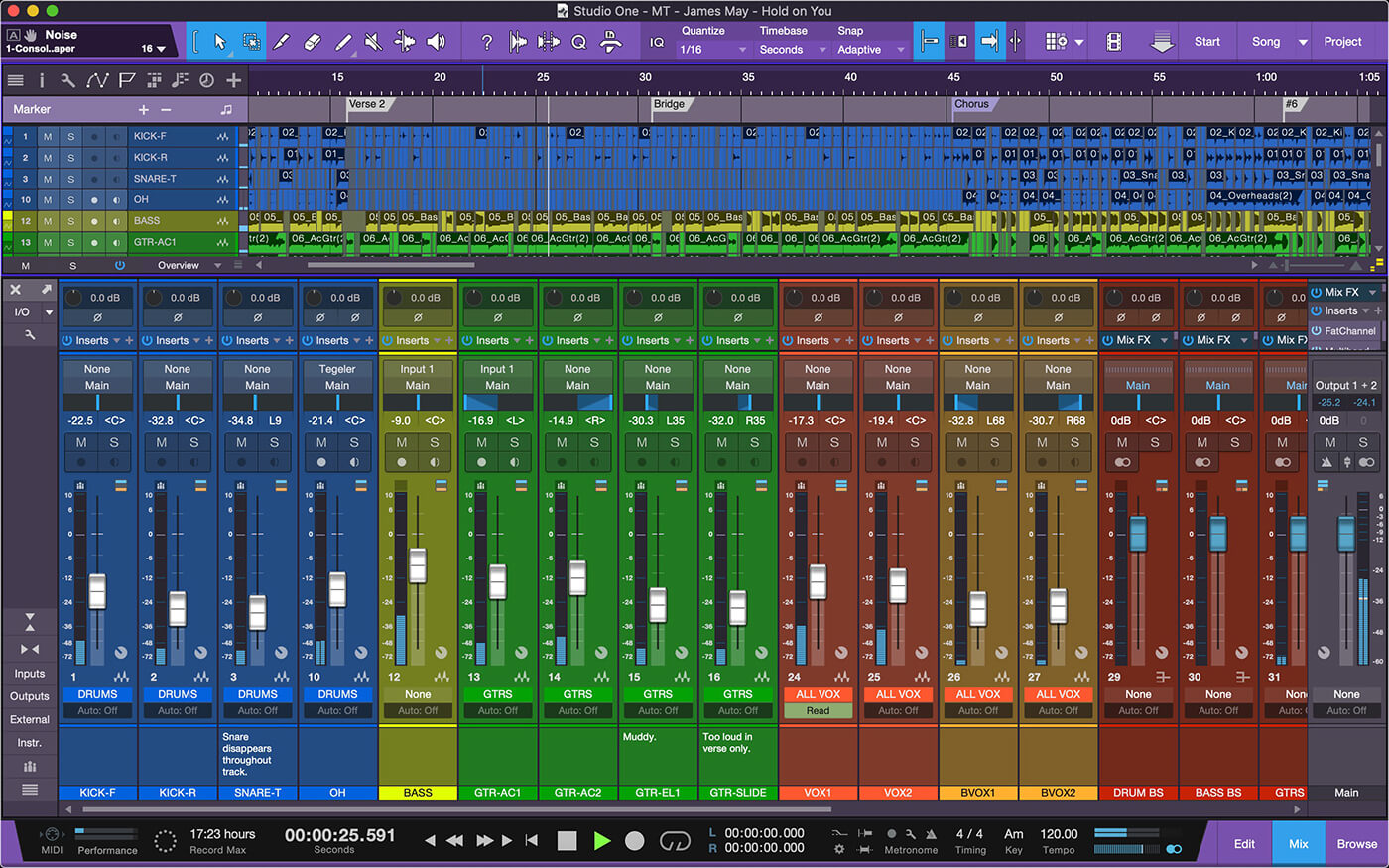
thirteen. To get back to the Mix window, click F3. Let's start mixing by bringing all faders down to zero. Brainstorm bringing up faders and getting a basic mix. Do your all-time to balance the instruments, and then you can hear them all. This is where yous should too start panning instruments to the left and right.
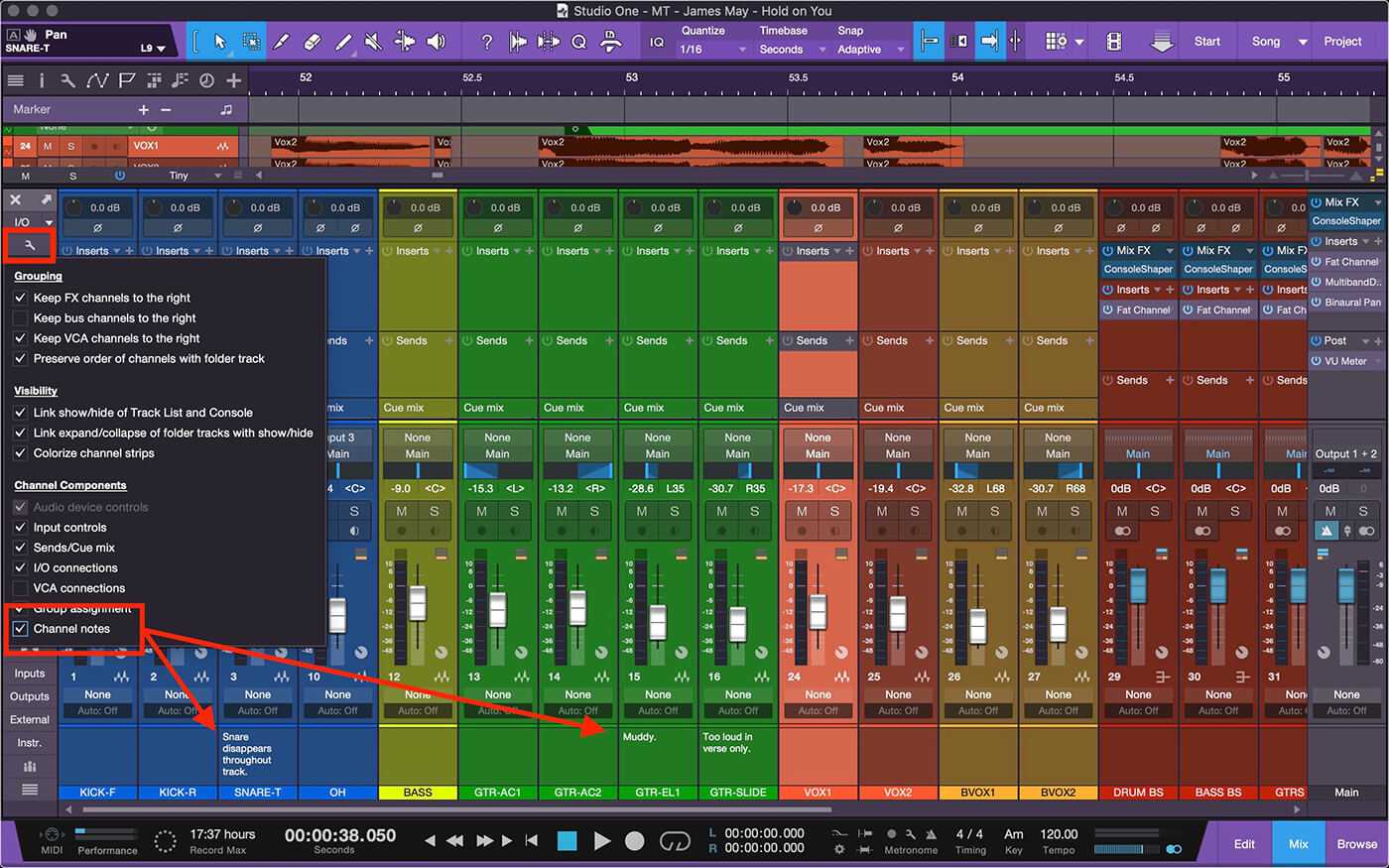
xiv. Permit's listen once more to the song and make any notes about problem areas. Nosotros recommend making notes for individual tracks in the Track Note area at the bottom of each fader. This feature can exist found in the Track Options menu. It's a good identify to list EQ problems and/or where an musical instrument disappears in the mix then I tin go back and compress or automate later.
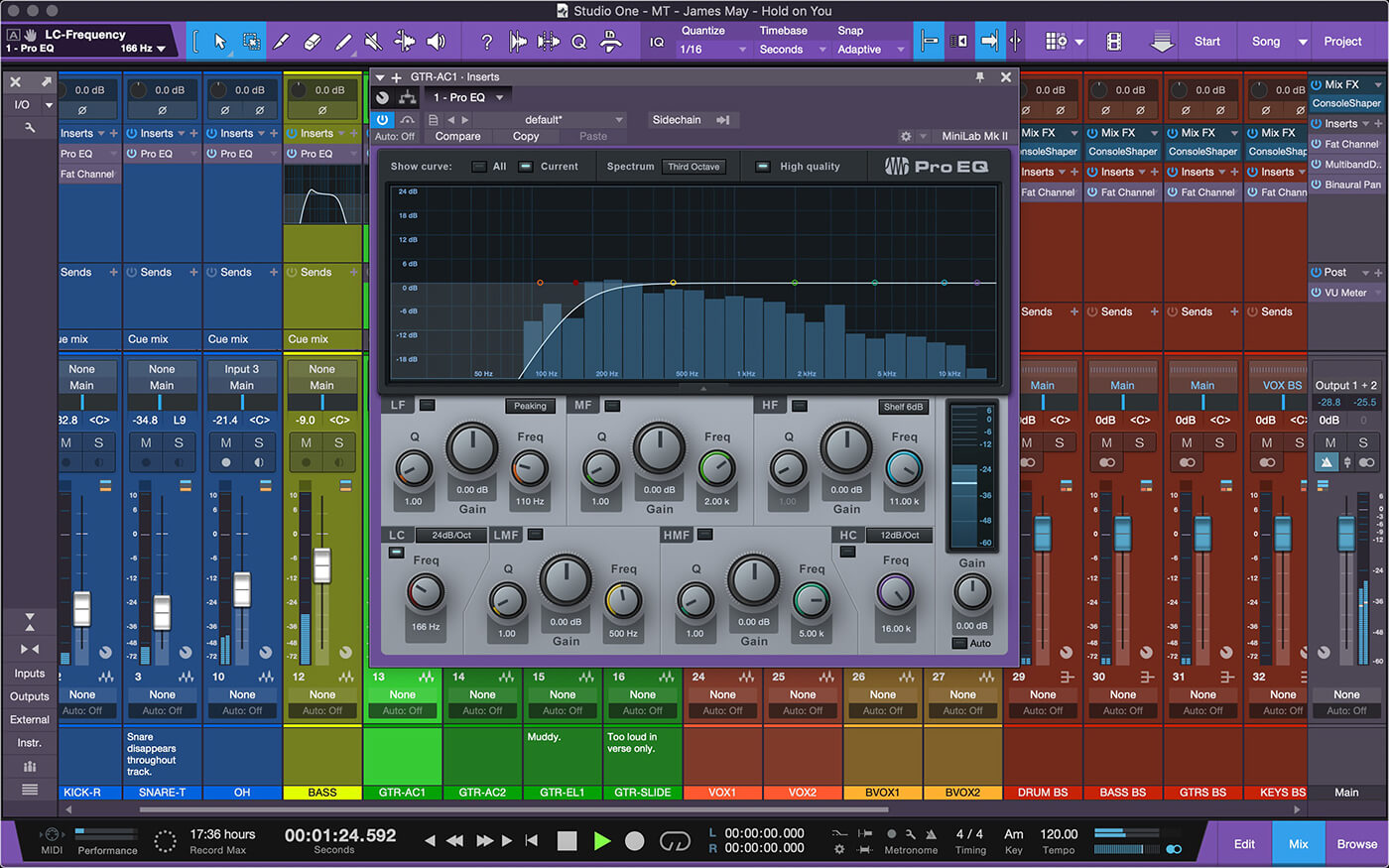
fifteen. Now let'southward clear upward some mud and regain some head room. Let's cut the low frequencies on each instrument upwards to around 100-150Hz. This leaves room for the bass and kick to stand out. Showtime with a depression cut and punch the frequency upwardly until the musical instrument starts sounding thin – so dorsum down simply a tiny bit. Apply this pace to each rails every bit needed.
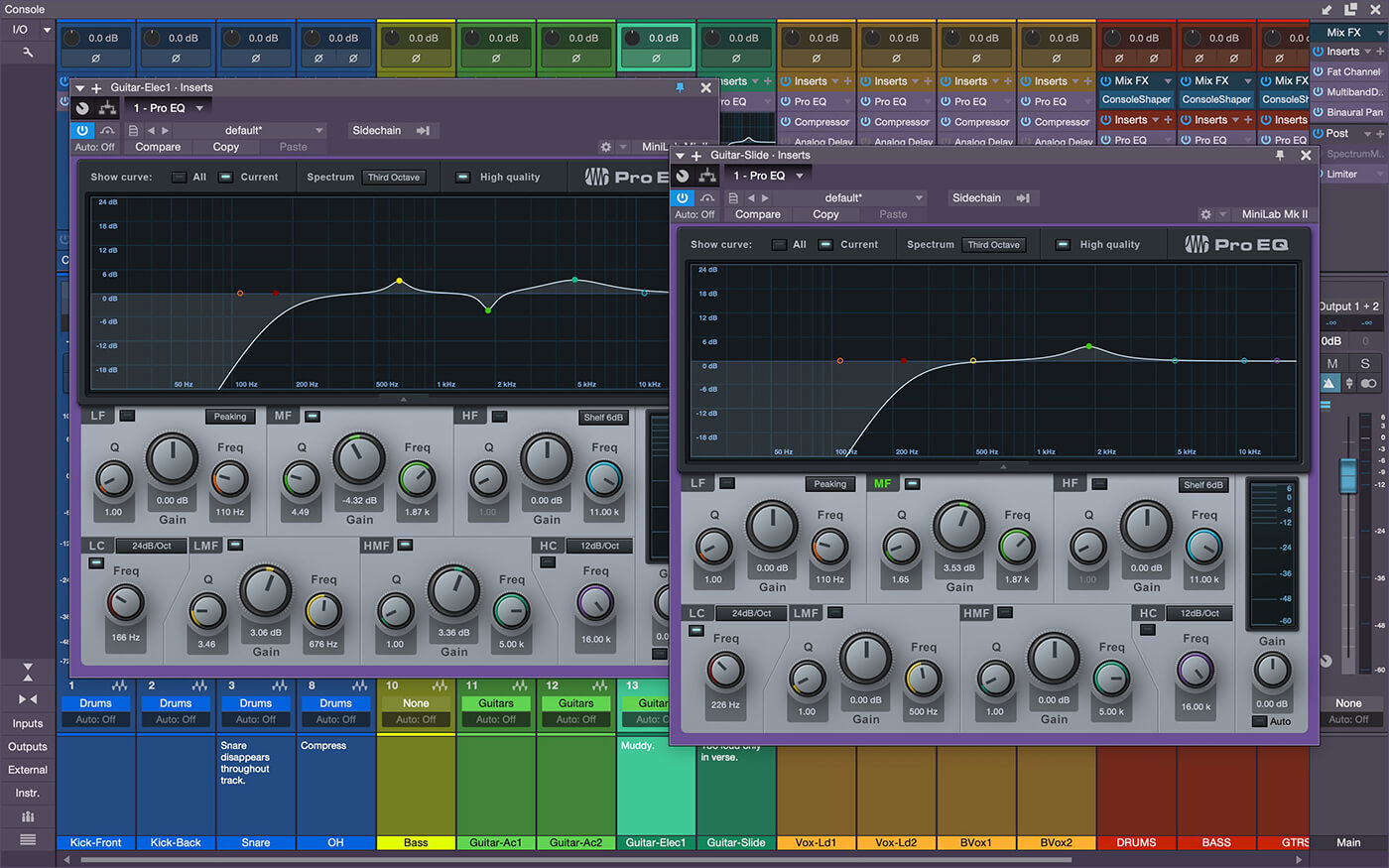
16. At present listen for places where instruments disappear in the mix. This is where surgical equalisation comes into play. In this instance, the electric guitar and slide guitar compete for infinite – so, adding a little EQ boost at i.87k on the slide and cutting at i.87k on the other brings the slide guitar out better so y'all can hear it. Remember: information technology's normally better to cut than heave!
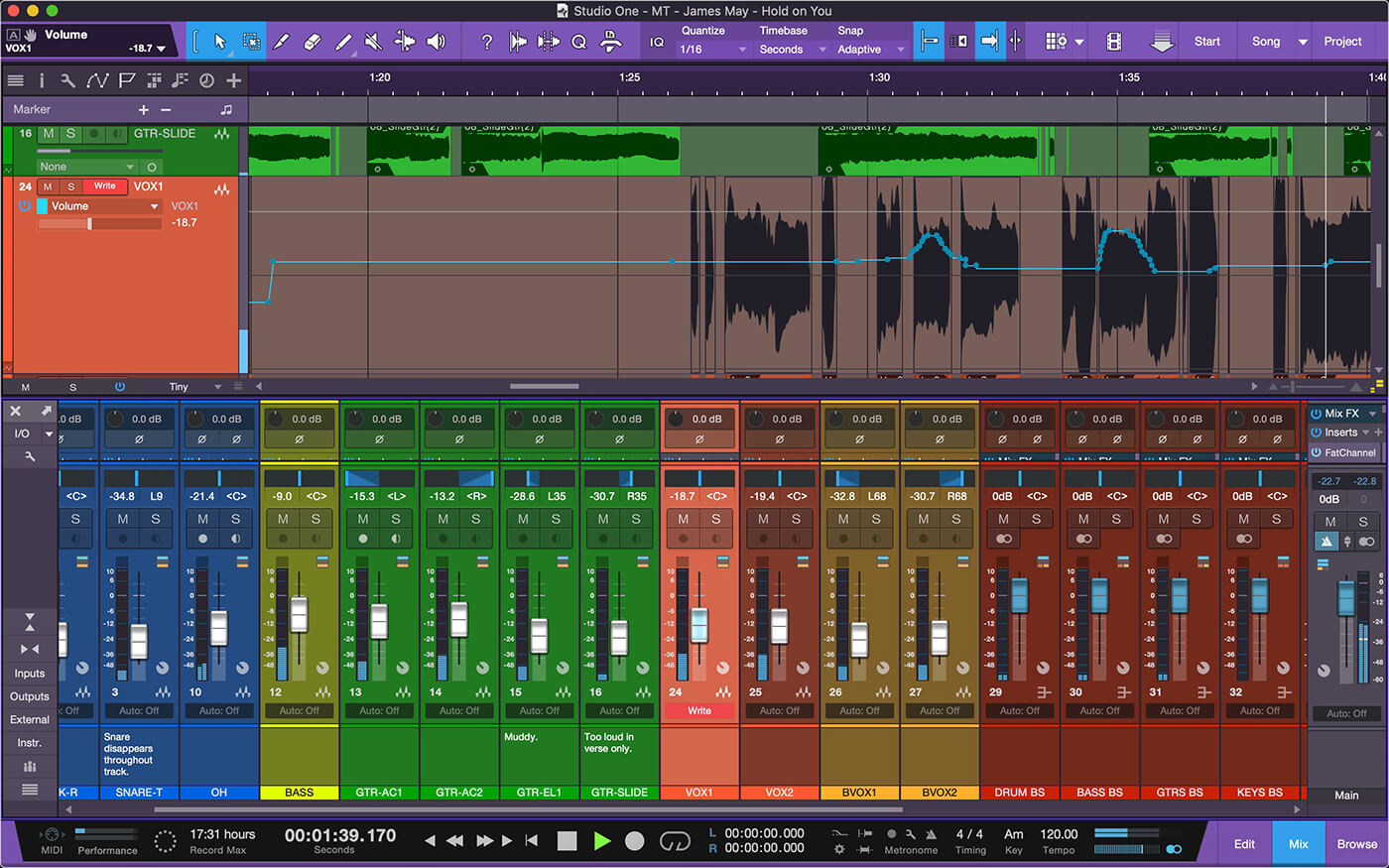
17. Now, that our tracks are competing less and everything has its own identify, it's time to start adding automation. We tend to apply automation on vocals: if a word or phrase gets lost in the mix, we automate a fiddling volume boost but at that place on the vocal. Set the Automation fashion to Write, start playback, and ride the fader to get your heave. Recall to change the automation mode to Read when finished so you don't overwrite what y'all just did.
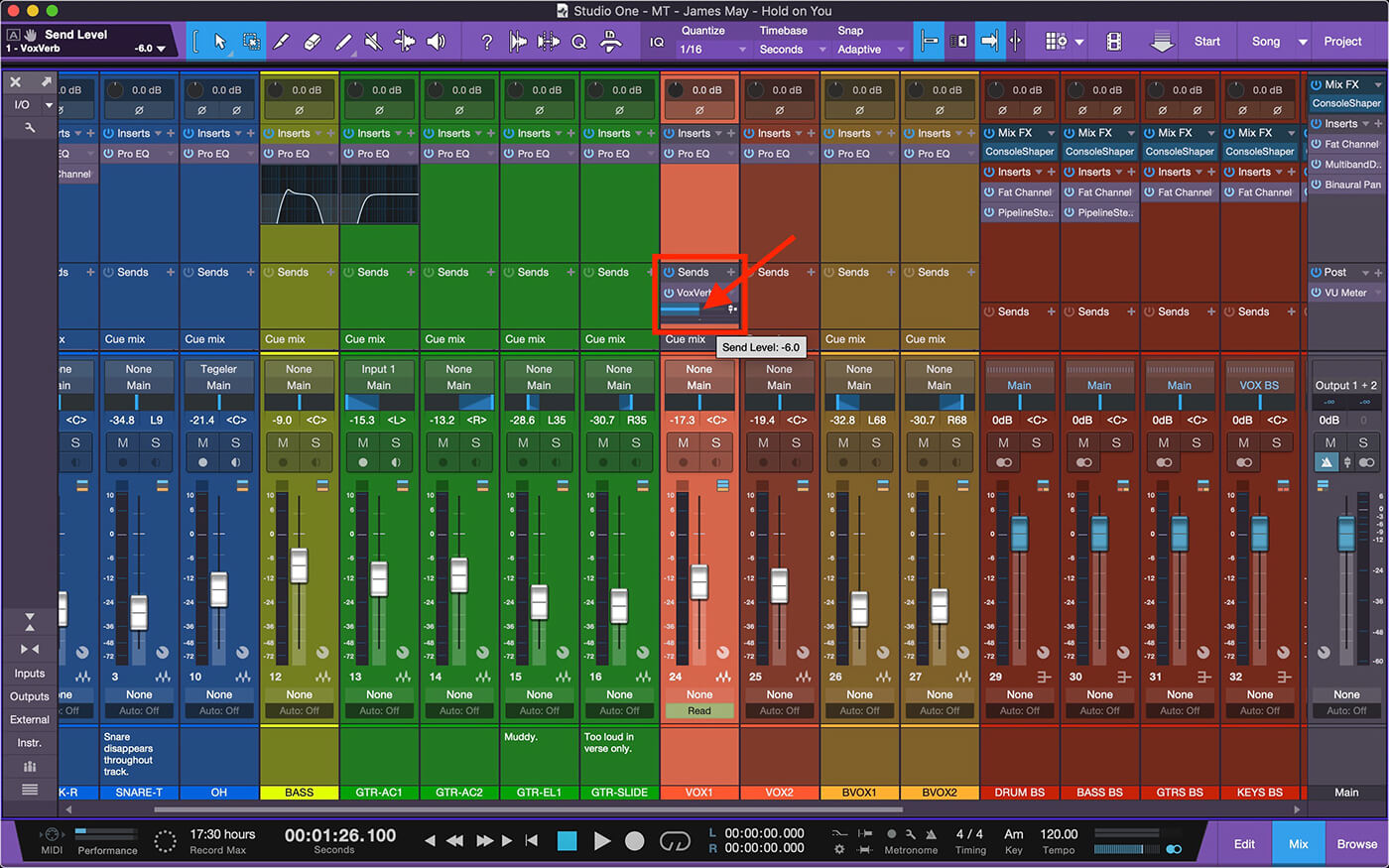
18. Now we tin add effects to taste. We'll click the [+] next to the transport of the runway and and so click on the FX buss we want. At present we adjust the corporeality of level sent to the effect. To add effects to a group of tracks all at once, add the send to the omnibus for those instruments or highlight those tracks, correct-click and cull Add Bus for Selected Channels.
For more Studio One tutorials and workshops, check hither.
Source: https://musictech.com/tutorials/studio-one/getting-started-mixing-in-studio-one/
0 Response to "During Mixing Audio, What Level Should the Master Fader Be Reading in Studio One"
Post a Comment